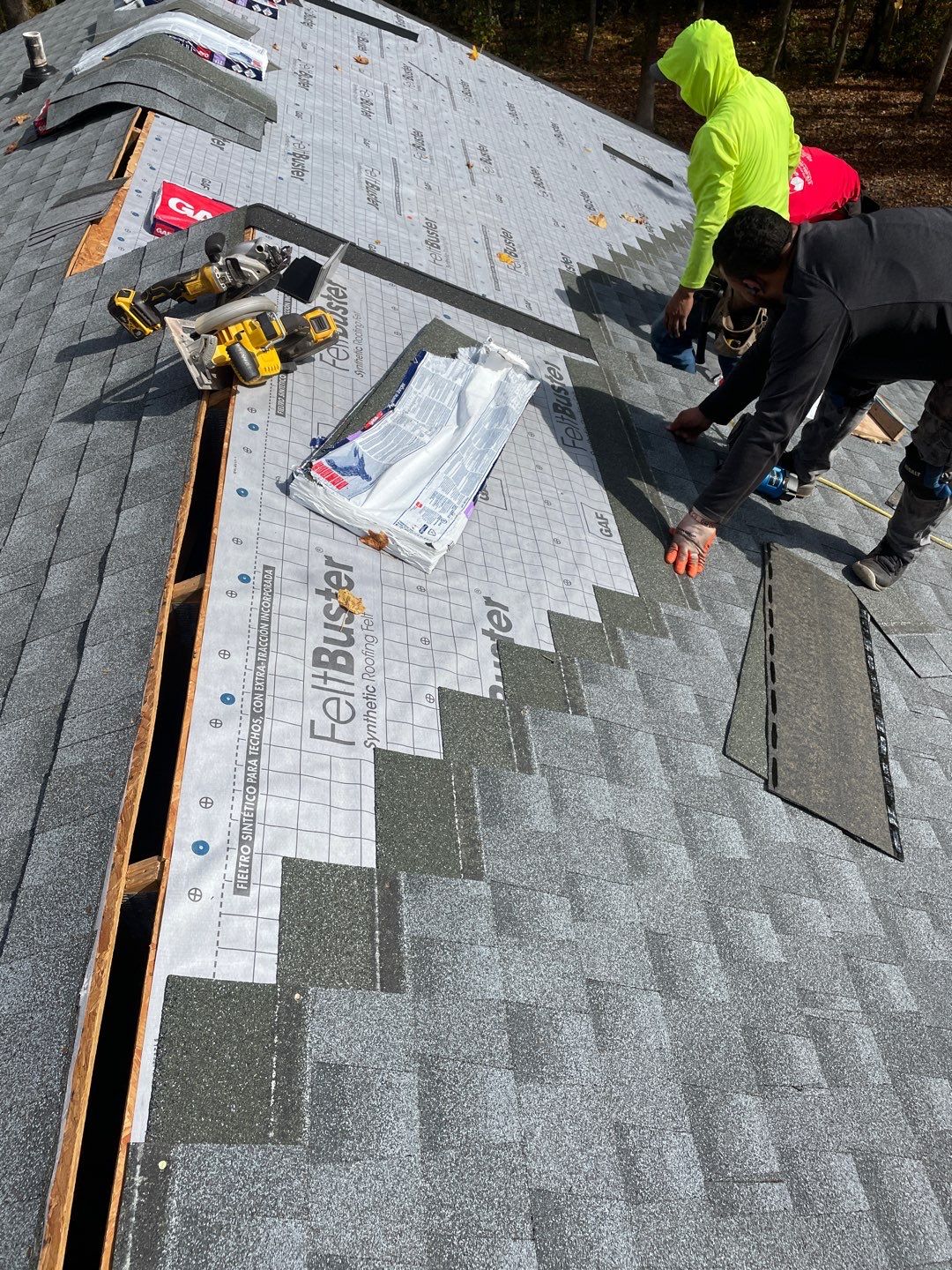The Benefits of Collaborating With Gainesville FL Roofing Companies
The Benefits of Collaborating With Gainesville FL Roofing Companies
Blog Article
Finest Practices for Ensuring Proper Roof Air Flow
A balanced consumption and exhaust air vent proportion, generally 1:300, plays a critical duty, with consumption vents ideally placed at the lower edge of the roof covering for amazing air entry and exhaust vents at the top for cozy air exit. Keeping insulation away from vents is important to protect against airflow limitation.
Understand Ventilation Fundamentals
Appropriately comprehending ventilation fundamentals is crucial for making certain the durability and efficiency of roofing systems. Reliable ventilation minimizes dampness buildup and temperature extremes in the attic room, both of which can lead to significant structural damage in time. A well-ventilated roof assists in protecting against typical issues such as mold and mildew growth, wood rot, and ice dams, which can compromise the integrity of the roofing products and the underlying frameworks.
The primary objective of air flow is to promote the motion of air, permitting a constant exchange in between the exterior and interior environments. This balance is achieved through a combination of consumption and exhaust vents that interact to keep ideal air flow. Intake vents, normally situated along the soffits or eaves, enable fresh air to go into the attic space, while exhaust vents, typically situated at or near the roofing system ridge, enable warm, damp air to run away.
Trick variables influencing the effectiveness of roof air flow consist of correct placement, sufficient sizing, and ensuring that both consumption and exhaust vents are unblocked. Normal assessment and upkeep are critical to determine possible obstructions, damage, or ineffectiveness in the air flow system, therefore protecting the roofing system's performance and longevity.
Sorts Of Roof Covering Vents
Roofing vents play a critical role in maintaining effective attic air flow and, by extension, the general health of the roof covering system. Different types of roofing system vents are available, each with one-of-a-kind benefits customized to certain roof demands.

Soffit vents are mounted under the eaves and operate in tandem with roofing system vents to ensure a balanced intake and exhaust system. By enabling cooler air to enter from below, soffit vents help with the expulsion of hot air with upper vents. Gable vents, located on the outside wall surfaces of the attic room, offer one more efficient option, specifically in homes with gable roofings.
Analyze Your Existing Ventilation

Following, consider the age and condition of your roof covering materials and air flow components. Older systems may not adhere to existing building codes or might have worn away over time, minimizing their performance. Conduct a thorough assessment to identify any type of indicators of damage, such as corrosion, damages, or spaces that could compromise the system's efficiency.
Additionally, gauge the attic temperature and humidity degrees. High temperature levels and moisture can suggest inadequate ventilation.
Setup Best Practices
Efficient installation of roof ventilation systems is critical for ensuring ideal performance and long life. Proper setup begins with comprehending the particular air flow needs of the building and the roofing system it covers. This involves calculating the right proportion of intake to tire vents, generally adhering to the 1:300 rule, which states one square foot of air flow for every 300 square feet of attic flooring space.

Consumption vents must be mounted at the roofing's reduced side, frequently in the soffits, to enable great air to enter. Exhaust vents, on the various other hand, need to be set up near or at the roofing's top to facilitate the leave of cozy, moist air.
Seal all vent links carefully to stop air leaks and prospective water infiltration. Usage top notch products and comply with supplier standards to ensure durability and effectiveness. Additionally, incorporating ridge vents with baffles can dramatically improve official source air movement effectiveness by stopping wind-driven rainfall and snow from entering the attic room.
Eventually, precise setup of roof air flow systems reduces prospective problems such as mold growth, ice dams, and structural damages, guaranteeing the roofing's stability and the structure's general health and wellness.
Normal Upkeep Tips
Consistency in upkeep practices is fundamental to ensuring the lasting effectiveness of roof covering air flow systems. Throughout these evaluations, make certain that vents are free of debris, nests, and various other obstructions that can hamper air flow.
Use a soft brush or a vacuum to get rid of dirt and particles from intake and exhaust vents. Be cautious not to damage the air vent screens or louvers throughout the process.
Correct insulation is similarly crucial. Make sure that attic room insulation does not obstruct the vents, as this can drastically restrict air flow. If any insulation has actually changed or resolved, reposition or change it to keep an effective barrier.
Finally, change any damaged or missing components immediately. Broken vents, split shingles, or scrubby blinking can all add to insufficient air flow and should be attended to immediately. Normal upkeep ensures that the roof covering air flow system functions ideally, thereby extending the life expectancy of the roof covering itself.
Conclusion
Guaranteeing appropriate roof ventilation is extremely important for preserving the effectiveness and durability of a roofing system. Adherence to the 1:300 intake and exhaust air vent ratio, coupled with the strategic placement of vents, is important. Regular biannual examinations, particles cleaning, and guaranteeing insulation does not block airflow are crucial methods. Implementing these best methods will certainly promote a well-ventilated roof system, thus alleviating possible issues connected to moisture buildup and extreme warmth, eventually extending the roof covering's lifespan.
A balanced consumption and exhaust air vent proportion, typically 1:300, plays a critical role, with consumption vents preferably put at the reduced side of the roof for great air read this article entrance and exhaust vents at the top for cozy air exit. Intake vents, generally situated along the soffits or eaves, permit fresh air to get in the attic room area, while exhaust vents, commonly located at or near the roof covering ridge, allow warm, humid air to leave.
Soffit vents are mounted under the eaves and job in tandem with roofing system vents to make certain a well balanced consumption and exhaust system. By enabling cooler air to go into from below, soffit vents assist in the expulsion of hot air through upper vents. Adherence to the 1:300 find this consumption and exhaust vent proportion, paired with the calculated positioning of vents, is important.
Report this page